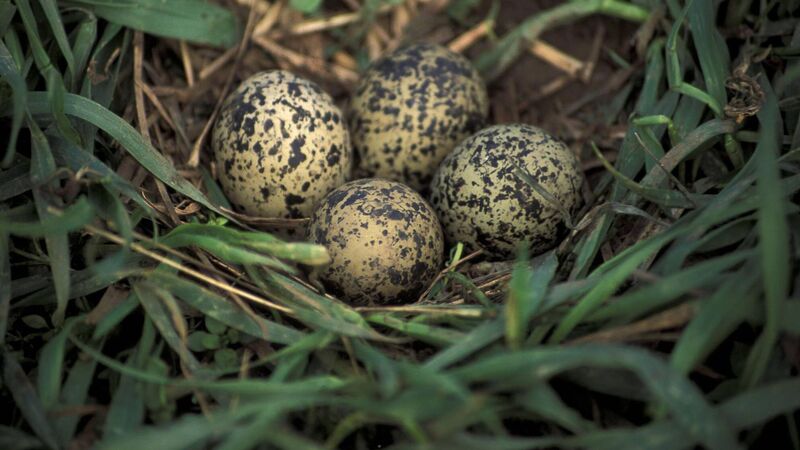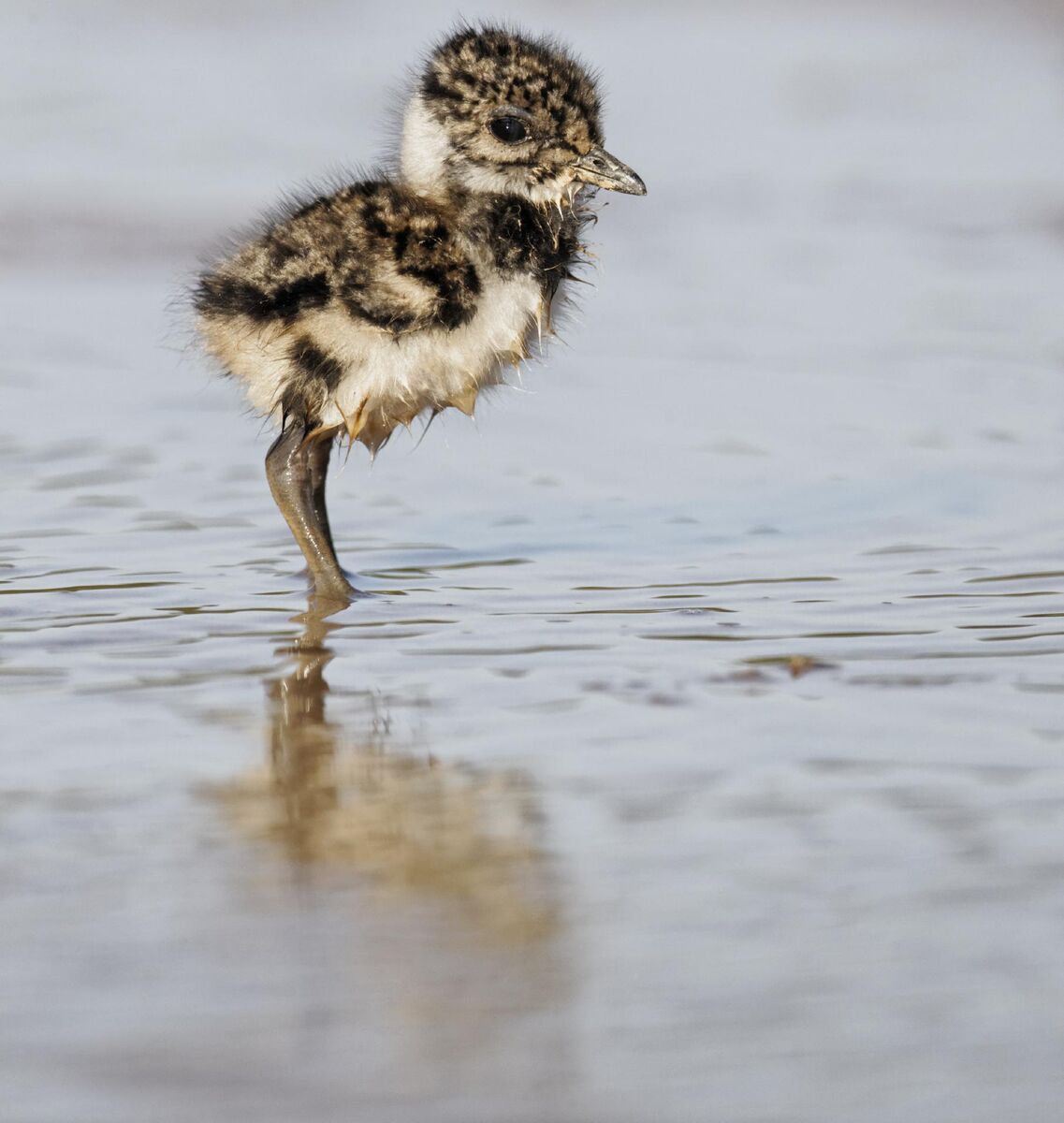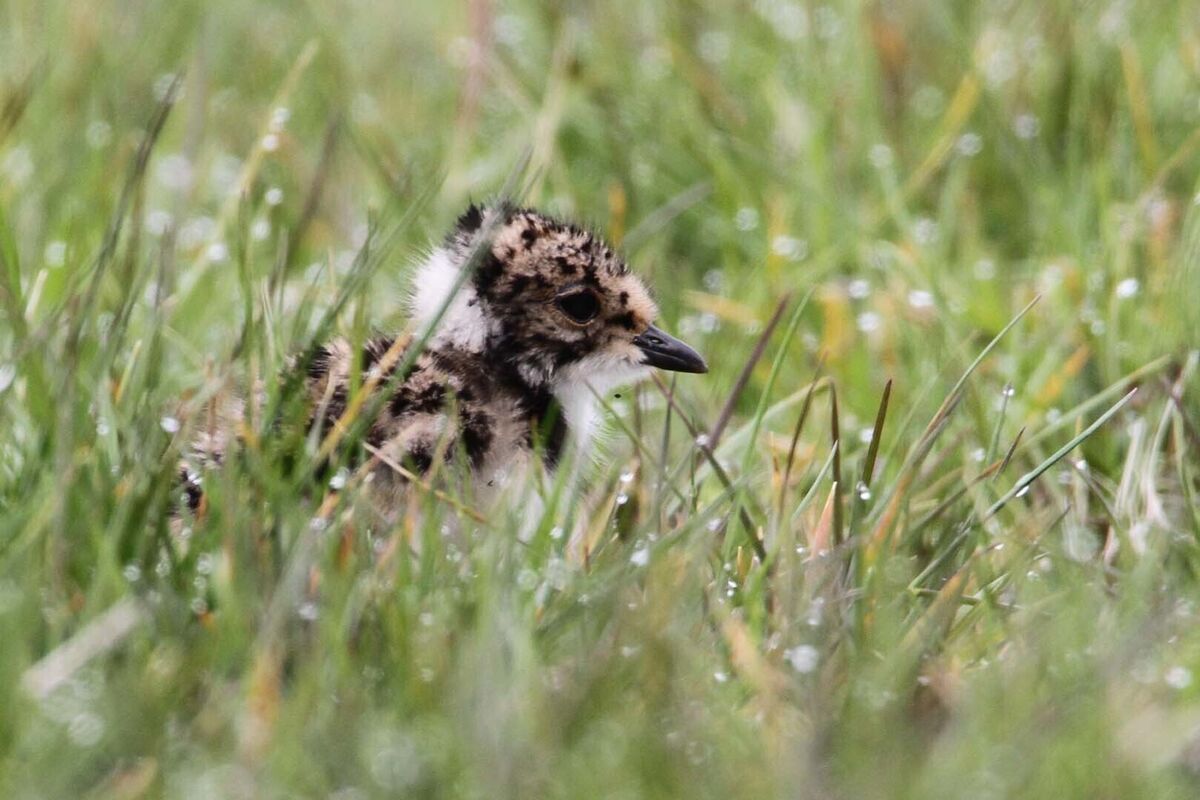Ominous decline in curlew and lapwing numbers

Lapwing (Vanellus vanellus) nest with four eggs
To the man and woman in the street, ‘godwit’ ‘dunlin’ and ‘turnstone’ are unfamiliar bird-names — although large numbers of these ‘waders’ descend on our wetlands in winter. Few people, other than wildfowlers and bird-watchers, frequent such lonely places, so these the presence of these birds doesn’t register with the public.
Just two ‘shorebirds’, the curlew and the lapwing, are well known. Both breed in Ireland. Boggy ground is the habitat of choice but some pairs nest on farmland.
The beautiful song and mournful call of the curlew are classic evocations of Irish Nature but, alas, their charm hasn’t saved the bird. Britain and Ireland used to hold a quarter of Europe’s curlews, but their numbers fell by 50% in the 20 years up to 2016.
The decline is ominous. A close relative, the Eskimo curlew of North America, has been driven into extinction; it was last recorded in 1987. Another member of the tribe, the slender-billed curlew, is listed as ‘critically endangered’ by the International Union for the Conservation of Nature. Will our much-loved ‘crotach’ go the same way?
The plight of the lapwing is also worrying. The huge flocks, which used wheel over Rahasane Turlough and the Little Brosna, are much smaller nowadays and the species’ breeding range here has halved in the last fifty years.
Lapwing vocalisations are not as evocative as those of the curlew, but the mournful ‘peewit’ call gives the bird one of its many names. Another one, ‘green plover’, comes from the Norman French term ‘plovier’, meaning ’rain-bird’.
🥳🥳🥳 This chick and it’s sibling have finally fledged from our Leitrim site. 🥳🥳 It’s been a nail biting few weeks for our Leitrim Curlew keepers and team. Celebrations 🍻 🍾 will have to wait thou, as there are still snipe chicks to look after! pic.twitter.com/EXIFyBBiqD
— The Irish Breeding Curlew EIP (@CurlewEIP) July 4, 2023
Like the curlew, the lapwing nests on the ground. A farmer might come upon lapwing eggs in spring. Choosing such an exposed nest location seems daft to our eyes. Ground predators — foxes stoats and rats — are constantly on the prowl, while crows, magpies, and birds of prey, the military drones of the natural world, patrol the skies.

Three to five ‘Easter’ eggs are laid in a neat circle, their pointed ends together. Beautifully camouflaged, they blend with their surroundings. If danger threatens, the wary parent may slip quietly off the nest. Challenging an intruder diverts attention from the eggs.
But it’s not the bird’s only defence. A paper just published by scientists from the University of Exeter reports that lapwing nests are not as vulnerable as they seem. The researchers used ‘3D occlusion and predator visual modelling’ to test for the visibility of nests in the field.
A slightly raised nest location reduces the risk of flooding and gives an all-round vista; an approaching enemy is easily spotted. The vegetation surrounding the nest may seem slight, but it is most carefully chosen to hide the nest effectively from four-legged predators.

Chicks, even if they have just emerged from the eggs, scamper under cover when disturbed. "This lapwing runs with the shell on its head," says Horatio in Hamlet.
A parent bird’s ‘distraction display’, feigning injury, leads an intruder away from the nest.
The Exeter researchers conclude: "An open field would actually be perceived as a closed habitat to a terrestrial predator searching for nests on the ground."







